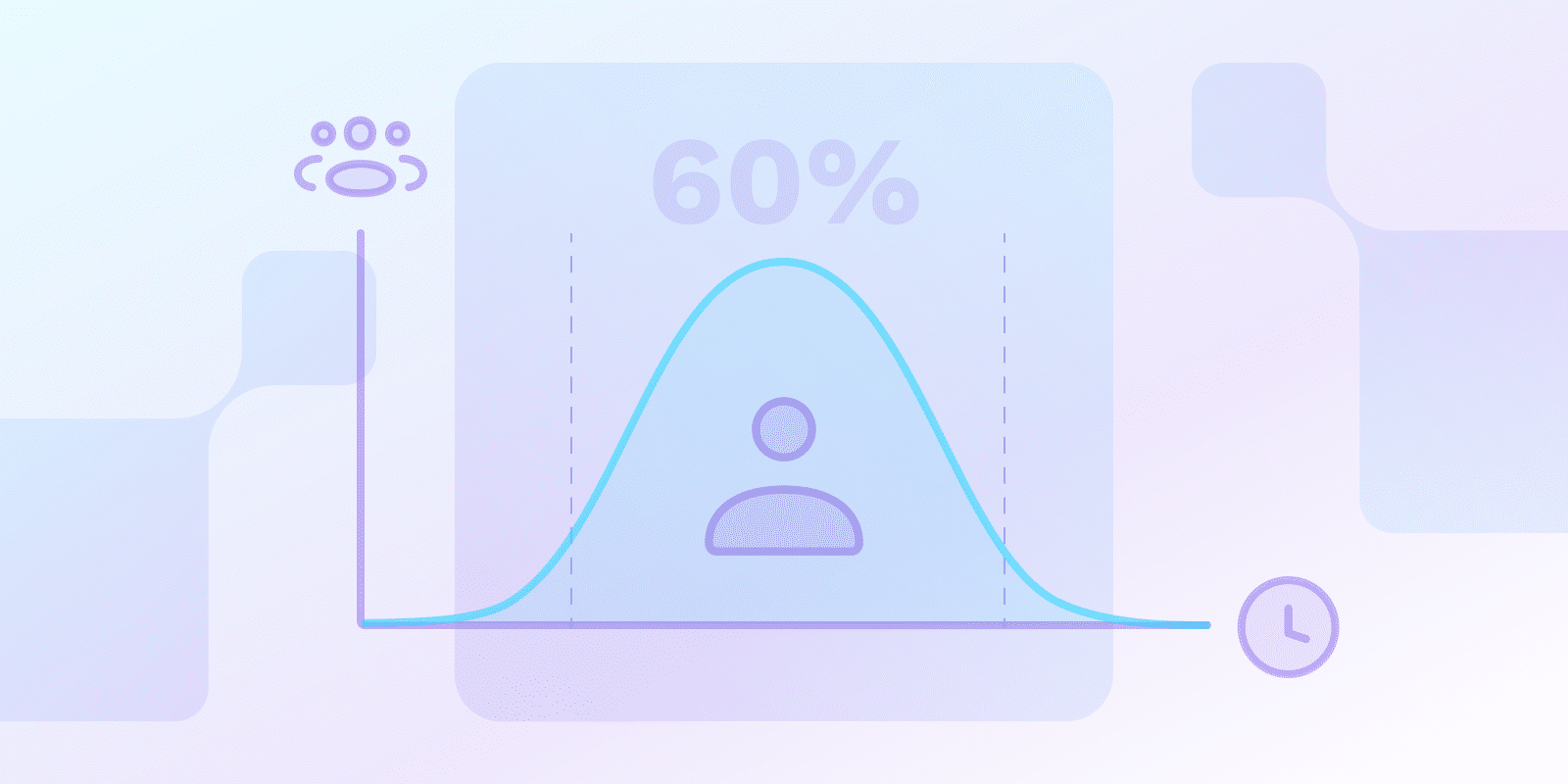Métricas e indicadores clave de rendimiento (KPI) de SaaS
¿Qué es el valor de vida del cliente (CLV)?
Published: 8 de noviembre de 2024
Last updated: 26 de noviembre de 2024

¿Qué es el valor de vida del cliente (CLV)?
El valor de por vida del cliente, o CLV, es el beneficio neto total que una empresa anticipa obtener de un cliente a lo largo de su relación. Representa el valor monetario de un cliente para la empresa y es un indicador importante de la salud a largo plazo de la clientela.
El CLV ayuda a las empresas a determinar cuánto dinero gastar en atraer nuevos clientes y retener a los actuales. Es crucial recordar que el CLV es solo una estimación y puede diferir significativamente según el sector y el estilo de negocio.
¿Cuáles son los diferentes tipos de valor de por vida (LTV)?
Un indicador crucial conocido como valor de por vida (LTV) mide la cantidad total de dinero que una empresa puede anticipar ganar de un solo cliente, bien o servicio a lo largo de la vida de ese cliente.
Aquí hay algunas ilustraciones de varios tipos de LTV:
- valor de vida del cliente (CLV): la cantidad total de dinero que una empresa puede anticipar ganar de un solo cliente a lo largo de su compromiso con la empresa.
- Valor de por vida del producto (PLV): la cantidad total de dinero que una empresa podría anticipar ganar de un solo producto durante el transcurso de toda su existencia.
- Valor de por vida del servicio (SLV): La cantidad total de dinero que una empresa podría anticipar ganar con un solo servicio a lo largo de su vida útil.
Las empresas pueden obtener información importante sobre su clientela, línea de productos y ofertas de servicios al comprender y utilizar los conceptos de LTV. Esta información puede influir potencialmente en la rentabilidad y el éxito a largo plazo, pero requerirá una consideración cuidadosa.
¿Cómo se calcula el valor de por vida (CLV)?
Para calcular el CLV, la fórmula más común utilizada es:
CLV = Valor promedio del pedido (AOV) x Frecuencia de compra x Vida útil del cliente.
Divida el número total de ventas por el número de consumidores distintos que compraron durante el mismo período de tiempo para obtener la tasa de frecuencia de compra promedio.
Por ejemplo, la frecuencia de compra promedio sería dos si una empresa tuviera 500 clientes únicos y 1000 compras.
Los cálculos de CLV más complejos también pueden tener en cuenta variables como la tasa de rotación y el beneficio bruto por cliente.
¿Qué factores influyen en el valor de vida del cliente (CLV)?
Comportamiento del cliente, satisfacción, lealtad, compromiso, valor de compra, longevidad del cliente, margen de beneficio, Tasa de retencióny la tasa de descuento son algunas de las características que afectan al CLV.
Cada una de estas variables está sujeta a cambios con el tiempo, lo que podría afectar el CLV en su conjunto.
Las empresas pueden identificar clientes de alto valor y personalizar métodos para fomentar su lealtad y optimizar su potencial al saber cómo interactúan estos aspectos.
Sin embargo, es importante recordar que puede ser difícil predecir el comportamiento del cliente con exactitud y, por lo tanto, los cálculos de CLV siempre implicarán cierto grado de incertidumbre.
¿Cómo pueden las empresas aumentar el valor de vida del cliente?
Las empresas pueden aumentar el CLV (valor de por vida del cliente) mediante:
- simplificando el proceso de pago y priorizando los requisitos de los clientes sobre los de los competidores
- aumentar la satisfacción del cliente
- implementando un plan de fidelización de marca para clientes
- utilizando modelos predictivos para pronosticar el valor futuro
Monitorear los indicadores de CLV a lo largo del tiempo es crucial para evaluar qué tan bien retención de clientes las tácticas están funcionando.
¿Cuáles son las limitaciones del valor de por vida (LTV)?
Una métrica útil, el valor de por vida (LTV), es difícil de evaluar con precisión debido a la amplia gama de canales de contacto con el consumidor y las presunciones en las que se basa.
Si bien los cálculos de LTV pueden proporcionar información valiosa, es importante reconocer que son estimaciones basadas en suposiciones y que es posible que no siempre reflejen la realidad.
Puede resultar tentador reducir el proceso de cálculo a los costos directos, pero hacerlo puede pasar por alto algunos aspectos importantes de un cliente, como la lealtad a la marca o las referencias.
Como resultado, al tomar decisiones estratégicas, es imperativo utilizar el LTV con cuidado y tener en cuenta sus limitaciones.
Conclusión
Las empresas pueden utilizar las estimaciones de CLV para determinar cuánto gastar en atraer nuevos clientes y retener a los actuales. También pueden optimizar su rentabilidad a largo plazo sabiendo qué influye en el CLV y cómo aumentarlo.